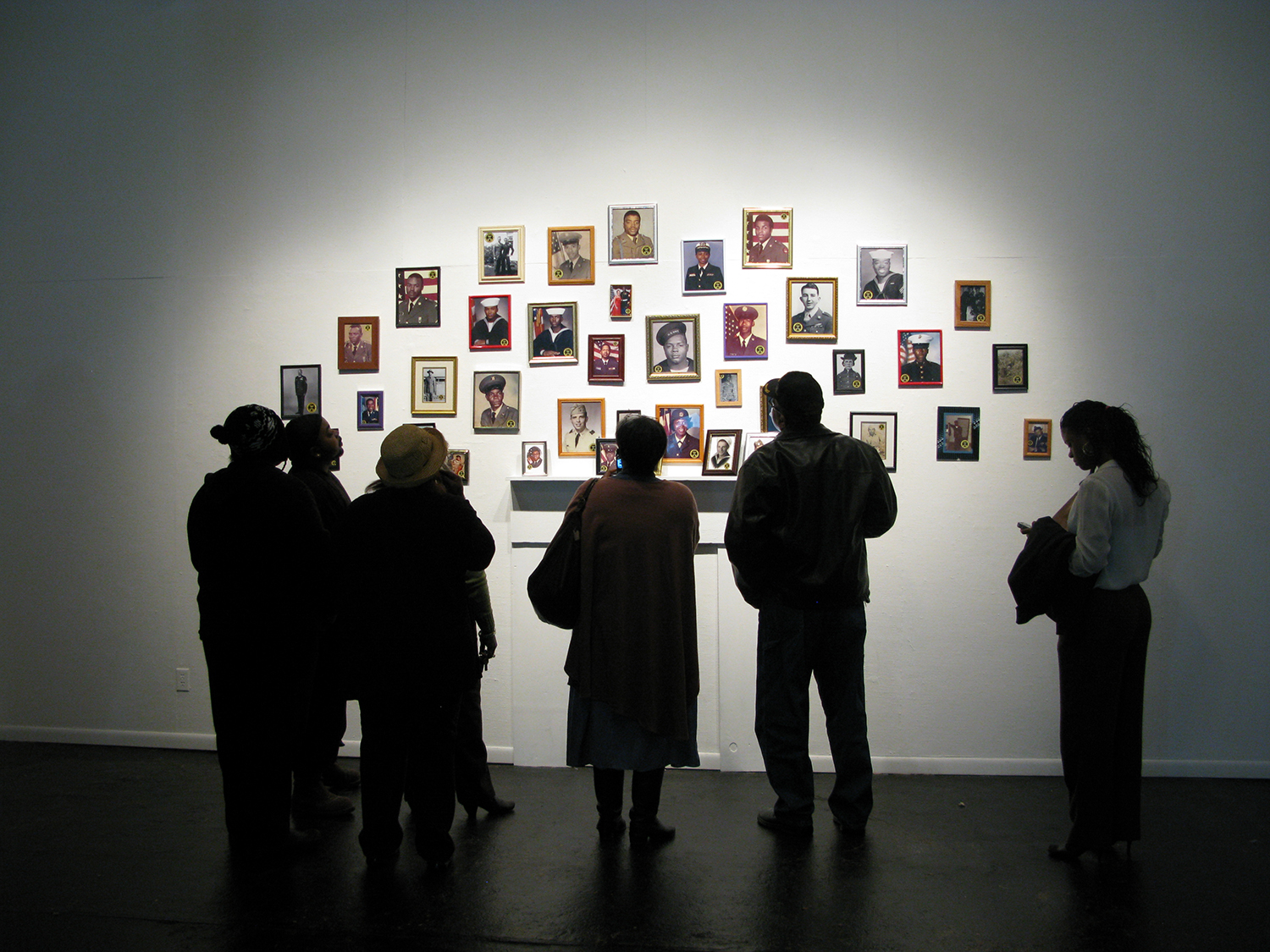The Coleman Center for the Arts (CCA) is pleased to present “To My Dearest and Beloved Family,” a new public work and exhibition by CCA artist Owen Mundy. Mundy’s work uses military portraiture and war imagery as a way to examine representations of personal and cultural identity in photography and film. His new project features reproductions of military portraiture from Sumter County, exhibited with his single channel video installation “Through a Glass Darkly” and an interactive military style portrait studio that invites visitors to have their portrait made “as an American.”
Mundy himself is a veteran of the US Navy who served as a Naval photographer from 1994-96. Stationed in San Diego, he photographed public ceremonies and celebrity visits aboard the USS Kitty Hawk. Here began his investigation into military photography, though it now takes different forms.
In his installation “To My Dearest and Beloved Family” Mundy has invited the community to provide pictures of area service members, veterans or those depicted in uniform. The photos depict individuals throughout history, from a Confederate veteran of the American Civil War (this image was an original tin type reproduced in a self published Civil War book) to a current JROTC member enrolled at Sumter Central High School (this image was taken with a mobile phone in front a bathroom mirror.) In addition to the photos Mundy also collected stories from veterans and family members while in York.
Lawrence Levi Delaine served in WWI. Aubrey Green served in WWII. Fred Adams served in Korea. Charles Richardson served in the army and later in the National Gaurd when it was federalized to protect civil rights workers marching from Selma to Montgomery, and again when Vivian Jones and James Hood registered at the University of Alabama as George Wallace took his stand in schoolhouse door. Johnny Thomas fought in Vietnam and Cynthia Brooks served during the Gulf War. Bernard Evans fought in Iraq and more than one are still serving in Afganistan.
Donated by loved ones who recall details of their relations service or by veterans themselves, the photos and the act of sharing represent deep love, pride, admiration and respect. One WWII era photo sums this up with the hand written inscription from the soldier depicted, “To My Dearest and Beloved Family.”
Mundy reciprocated the generosity of participants by devotedly scanning, digitally restoring, reproducing and framing each image. After exhibition at the CCA the framed reproductions and digital files will be given back to the owners of the original photos. The mementos can now be infinitely reproduced. Mundy’s reproductions are embellished with an artist designed seal that features the project name and harkens back to both military and government seals as well as gold leaf photo studio adornments.
Through A Glass Darkly from Owen Mundy on Vimeo.
In the single channel video installation “Through A Glass Darkly” Mundy chronicles landscapes from over 100 of the most popular war films. Beginning and ending in the desert it spans from Ben Hur to Jar Head, from the time of Jesus to the Iraq War. Stripped of heroes, villains, narrative and conflict, the piece eerily taps the collective memory of war. No violence is shown, though the viewer may be able to recall it, anticipating scenes and outcomes from conflicts throughout time. As Mundy says, “We are all veterans of a mediated war.”
In “The Americans” Mundy invites participants to sit and have their image made “as an American.” A reference to Robert Frank’s seminal documentary work and reminiscent of Richard Avedon’s portable studio, Mundy’s faux military portrait studio features the American flag and allows any person the opportunity to participate in the service members photographic right of passage. Photos taken throughout Mundy’s time in York will hang on the gallery wall until they too are returned to participants.
Mundy’s work is a survey-of the wars we fought, the technology we used to document ourselves, the clothes we wore and the way we posed our soldiers for remembrance. The photos, individually and collective, are documents of these constructions. Mundy begins to deconstruct the elements that make up our identity, which he posits is both inherited and performed. The photos have a reciprocal relationship to an American identity, in which representation and identity are constantly making and re-making one another. The title of “Through a Glass Darkly” references how we see God, but Mundy’s work is a reflection of how we see ourselves and make ourselves to be seen.

